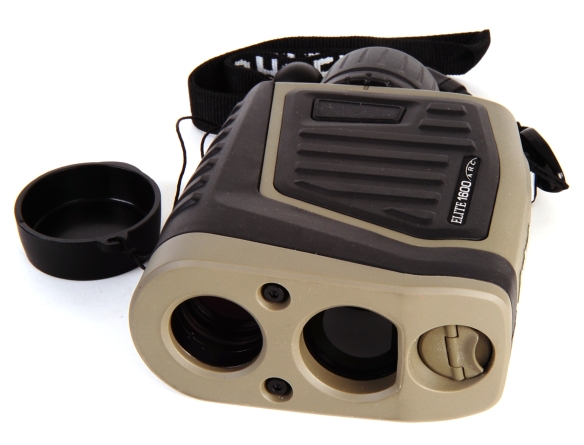
Firearm enthusiasts are often full of… bravado. To hear the stories, they all have the eyes of an eagle, hold membership in the Shadow Wolves and have the hunting instincts of Jedediah Smith. One guy will claim a good hit on a deer at 600 yards with a scoped rifle and another will immediately claim a 1,000 yard shot through metallic sights with a cap and ball revolver. I thought about this situation for some time and arrived at the conclusion that these good folks aren’t lying, they are merely confused.
Circa 1968, I took what I thought was a 500 yard shot at a large prairie deer. Unfortunately, it turned out to be a 200 yard shot at a really small deer… which explains why I was able to get to the kill so quickly. It is my theory that many of the people on the Internet who claim these extremely long range kill shots have made them with game controllers or have actually been shooting at really small deer.
In any event, this wandering piece of information is mostly me thinking in public while learning something about a piece of equipment, understanding how it might be used and how well it performs. The details of the product’s features and specifications appear last, as they meant little to me before I studied some trajectory tables and hijacked a truck full of employees to take on a working field trip.
Long range shooting is just so much mortar fire
You may have heard or read that the 45-70 Government chambered Trapdoor Springfield was the subject of early long range shooting analysis. One of the most popular stories is the 1977 article written for Rifle Magazine by W. John Farquharson and plagiarized by many since. In excerpt, in 1879 at Sandy Hook, NJ, Springfield Armory’s R.T. Hare put 405 and 500 grain bullets into a 6 foot bullseye at a surveyed 2,500 yards… 1.4 miles away. The black powder charged cartridge had a muzzle velocity of 1,350 fps.
|
||||||||||||||||||||||||||||||||||||||||||||||||||||||||||||||||||||||||||||||||||||||||||||||||||||||||||||||||||||||||||||||||||||||||||||
The table, left, shows the sad tale of a 45-70 Government round fired over such a long distance. The curve of trajectory can be bent and shaped for optimal performance at long ranges by shifting zero, but the curve will always be incredibly steep and precise bullet placement will occur only when very precise range is known.
|
|||||||||||||||||||||||||||||||||||||||||||||||||||||||||||||||||
For a closer examination of the same bullet’s path, the table on the right is broken into 50 yard increments.
With a 115 yard zero, and a 6″ critical target size, point blank range is approximately 135 yards. Within that range , a hunter needs only to place his sights on his quarry and the +/- path of the bullet is flat enough to place it into a vital organs without further hold over/under compensation.
The point blank advantage quickly evaporates beyond 150 yards. Estimating 200 yards, to a target when the distance is actually 250 yards, would place the bullet’s point of impact just shy of 24″ below the target. A misestimate between 350 and 400 yards would place point of impact 49″ below point of aim. A very large mature whitetail measures 40″ to the shoulder, most considerably less. A deer’s heart/lung kill zone is approximately 9″ in diameter.
More tables and still no chairs…
So you go to the range, set up and become proficient at hitting 200 yard targets, maybe even using targets resembling the profile of a deer. Then you go out into the woods, hunting with your trusty musket, and a curious thing happens. The deer aren’t standing in profile at predetermined distances and sometimes they may even be moving toward or away from you as you watch them and forget to shoot… buck fever. Quartering shots might reduce that 6″ critical target to less than one third that size and the quarry may be also be moving up or down a hill, all which makes getting off a good shot even more difficult.
Ultimately, time in flight and the effects of gravity cause a bullet to fall. Shooting up or down hill, as opposed to shooting level, does not actually alter the a bullet’s vertical drop. However, it does alter the path of the bullet in relationship to line of sight. Shooting on an incline (+/-) through sights that were adjusted on level ground always places shots high.
|
45-70-405 – Level Ground (115 Yard Zero) |
|||||||||||
| Yards | 0 | 50 | 100 | 150 | 200 | 250 | 300 | 350 | 400 | 450 | 500 |
| Velocity – fps | 1350 | 1263 | 1187 | 1123 | 1070 | 1026 | 989 | 957 | 928 | 902 | 878 |
| Path – in. | -1.5 | 2.7 | 1.5 | -5.9 | -20.2 | -42.0 | -72.1 | -111.1 | -159.6 | -218.2 | -287.4 |
|
45-70-405 – 60º Incline (115 Yard Zero) |
|||||||||||
| Yards | 0 | 50 | 100 | 150 | 200 | 250 | 300 | 350 | 400 | 450 | 500 |
| Velocity – fps | 1350 | 1260 | 1181 | 1115 | 1060 | 1014 | 975 | 941 | 910 | 882 | 855 |
| Path – in. | -1.5 | 9.4 | 14.9 | 14.1 | 6.3 | -9.2 | -32.9 | -65.5 | -107.5 | -159.6 | -222.3 |
|
60º Incline – Required Sighting Compensation |
|||||||||||
| Yards | 0 | 50 | 100 | 150 | 200 | 250 | 300 | 350 | 400 | 450 | 500 |
| Inches High | 0 | 6.7 | 13.4 | 20.0 | 26.5 | 32.8 | 39.2 | 45.6 | 52.1 | 58.6 | 65.1 |
What this means is that we not only have to be able to estimate distances to within a few yards, but we also have to be able to estimate angle of inclination, or stick a gyro on an accelerometer if we find ourselves hunting on something other than a perfectly level wilderness.
So we piled into the truck and did some field research…
We had two people estimate distances independent of one another, and one check the same distance with the Bushnell Elite 1600 ARC Rangefinder and verified with another quality rangefinder. I operated the rangefinder and paced off some of the distances, but did not estimate distances to avoid any humiliating, deserved criticism of my range estimating skills. Reference to shooting and shot placement are predicated on the 45-70 tables previously presented.
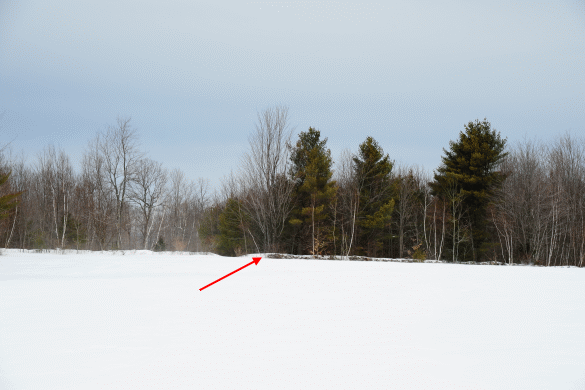
One of the elements that caused problems estimating distances was a large open area, devoid of distinguishable features. This made it difficult to place distant objects into the context of size. The berm at the edge of the snow covered field was estimated as 300 and 150 yards to the rangefinder’s verified 108 yards. Using the first estimate, holding over would place the shot 70″ high. The second estimate would hit roughly 4″ high. Using the range finder the next step would be dragging a field dressed seer out of the woods.
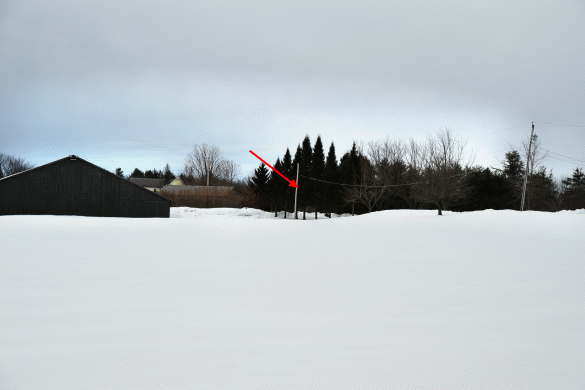
This pole was near buildings which may have helped estimating a bit; first estimator 160 yards, second estimator 260 yards and the Bushnell rangefinder check, 222 yards. The first shooter, not holding over enough, would hit roughly 22″ low, the second shooter holding over too much would hit roughly 15″ high. Chalk up a win for the deer.
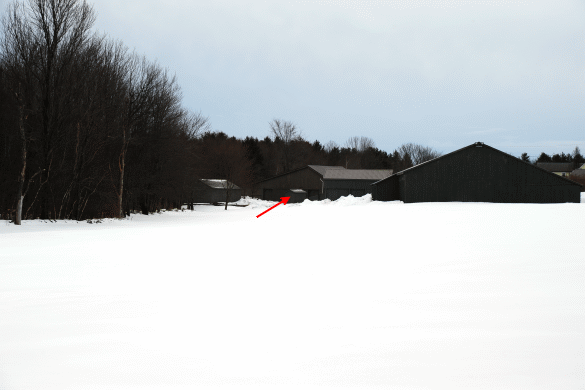
The distance to the shed was estimated at 300 yards and 310 yards, compared to the actual 292 yards. Both estimators indicated that the backdrop and side presence of familiar size buildings helped to improve estimating accuracy. The first shooter would still shoot roughly 7″ high and the second shooter nearly 15″ high. It doesn’t take much of a misjudgment at 300 yards to have a deer give us a raspberry before trotting off and not in a particular hurry.
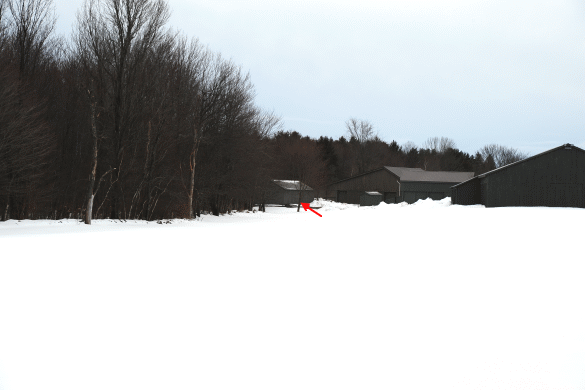
This lone tree, forward of the buildings, for some reason, had the highest degree of estimate error. The first estimator guessed 150, the second 160 and the actual distance was 274 yards. They came across with the accuracy as a home improvement contractor. Shooter 1 would hit approximately 48″ low and shooter 2 approximately 47″ low. Good for tilling soil, bad for bagging deer.
Inside 200 yards, with the exception of the berm in the field shot, accuracy of range estimating was actually quite good, at least within a few yards. Inside 150 yards, as long as the shooter knew they were inside 150 yards, the distance was very near the rifle’s point blank range and there was a good chance of venison stew. Over 200 yards, the only person who had a chance of bringing home a deer was me, the guy with the range finder. Imagine when the game is smaller and the distance longer.
Even not carrying a rangefinder into the woods during hunting season, a good range finder could be used to scout a hunting area and to establish distances to probable shooting backdrops and overall orientation. A good range finder could be used to gain proficiency at range estimating. A good rangefinder could be used to mark off targets for shooting practice. A good rangefinder could be set up to your specifics and carried into the field during hunting season as one more useful piece of equipment to insure a successful hunt.
Simple Simon or Techno Geek
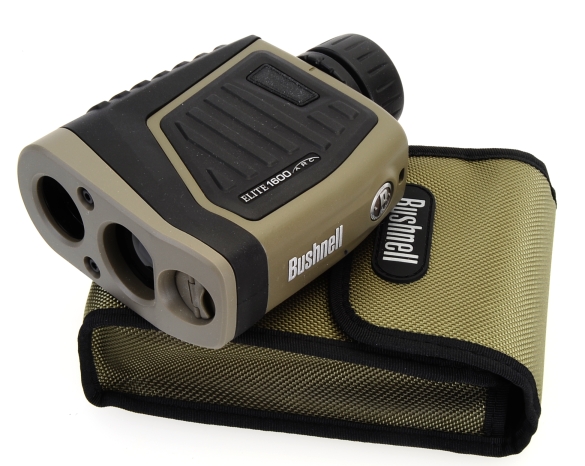
The Bushnell Elite ARC comes with a carry case, neck strap, eyepiece protective cover and multilingual instruction manual. I did what has been my practice, set aside the instruction manual to see if the rangefinder’s operation was intuitive. I think for anyone who has programmed a TV remote, cell phone or alarm clock the product, the range finder can be set up for personal preferences and rendered useful. For use of a couple of the more elaborate features, the manual would be necessary, at least for one walk through.
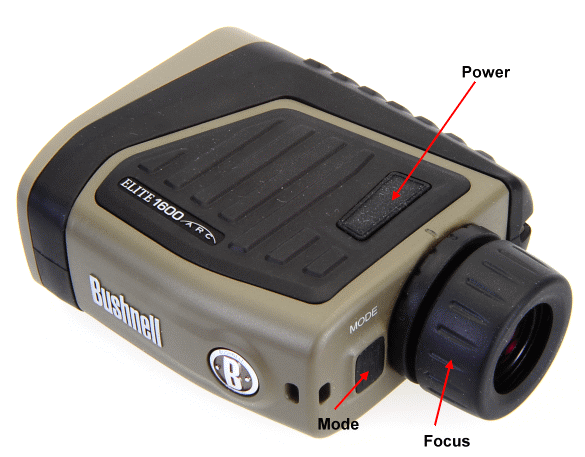
When I take a firearm into the field I know it’s external ballistics and I am familiar with shooting the firearm at anticipated hunting distances…. plus, I print out business size ballistic tables for the combination I am shooting, plastic laminate them and keep them in my pocket. So as a basic piece of equipment to estimate yardage, I only needed to know how to focus the Elite 1600 ARC’s eyepiece, power the unit up and read the distance to a… distant object. However, the Bushnell unit has many other useful features, all accessible with just a little bit more effort.
|
||||||||||||||||||||||||||||||||||||||
The Menu System – The Elite 1600 ARC utilizes the power button and mode button to navigate through its menu system. Pressing the mode button presents the various options and the power button confirms preferences. Some are basic, such as display brightness and yard or meter measurement, however, the use of other features presents more options.
Information appearing in the eyepiece
-
Angle Range Compensation modes
-
Battery state of charge
-
Aiming target
-
Active laser indicator
-
Targeting modes
-
Line of sight
-
Holdover/Bullet drop measurement
A brief feature elaboration…
Angle Range Compensation – The Angle Range Compensation feature adds angle of inclination and true horizontal distance when preference is set to “Bow” mode. The mode is functional between 10 – 99 yards/meters. When set to “Rifle” mode, line of sight to the ranged target is displayed, degree of elevation and holdover/bullet drop expressed (dependent on preference selected) in inches, MOA or centimeters. The “Rifle” setting functions from 100 – 800 yards and +/- 90º. The Elite 1600 can also be set to “E6” mode which turns off the ARC feature.
In order for the “Rifle” ARC function to calculate properly, some of the exterior ballistic characteristics of the rifle/cartridge combination in use need to be identified for the Rangefinder. This is accomplished by selecting one of ten ballistic groups programmed into the rangefinder. Easy deal, from the units menu, a group letter from A – J is selected. How do you know which group? The Bushnell’s manual lists 25 popular cartridge/bullet combinations along with the proper group letter assignment. The Bushnell site has 2,000 listings, however, this is arranged by bullet manufacturer, bullet diameter and velocity. If a cartridge isn’t listed, only a match with bullet and velocity is required.
Can the Elite 1600 be used to collect angle of inclination data for a useful purpose without entering ballistics data? Sure. Bushnell’s predefined ballistic groups cover a great many of cartridges, however, they do not cover softball trajectory cartridges like the 45-70 Government. I generate a trajectory card for my handloads and for factory ammunition with a ballistics calculator, listing level and inclined conditions in 10º increments up to 60º. I can plastic laminate the card, keep it in my back pocket and let the Elite 1600 give me accurate shooting angle data.
Targeting Modes – There is a “Bullseye” and “Brush” setting that is pretty handy. “Bullseye” allows ranging a target while ignoring its backdrop. The Elite 1600 picks up the closer target. In “Brush” mode the Elite 1600 ignore close in brush and similar… distractions and ranges to the distant significant target.
Can the Elite 1600 range a deer at 1,600 yards? Not directly. A deer out to 500 yards, a tree out to 1,000 yards and a reflective surface out to 1,600 yards. How to range a deer at 1,600 yards? Target an object very near the deer that has sufficient mass and reflectivity… like a rock formation.
Last thoughts… at least for now
Is the Bushnell Elite 1600 ARC a useful tool for the masses or a gadget for the hunter with more money than skill? I think it is a useful tool for any serious hunter who pushes their firearm beyond near point blank range. Add steep inclines, up or down to the range issue and, unless you are a hunter with substantial knowledge is the local topography, the Elite 1600 is almost a necessity.
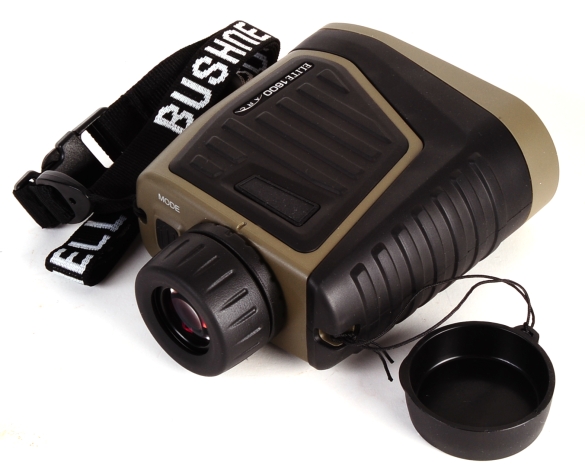
If the Bushnell Elite 1600 ARC isn’t exactly what you need, maybe a little less or maybe a little more, Bushnell has six models to select from with a variety of features and capabilities, ranging from under $200 to just a bit over $1,000. Check out the specifics at Bushnell’s web site.

Email Notification